Intel at Computex 2011: Ultrabook, new Atom's and lots and lots of tablets
Hello to everyone from overcast but very hot Taiwan, where the world's largest computer exhibition Computex has started working today. For five days, the largest IT companies will show the most diverse hardware - from chips to complete systems with all the stops. Traditionally, Intel always announces something important at Computex: for example, it was there that in 2008, the Intel Atom processors for netbooks (N270 / 230) and the first small computers were shown for the first time. The year 2011 was no exception - in Taipei today they spoke about the concept of Ultrabook and new plans for the development of the Atom family.

To be on the safe side, I’ll clarify that Computex did not live by chance in Taiwan. It was in this small island nation that dozens of famous IT companies and thousands of lesser-known ones were born. Asus, Acer, MSI, Foxconn, HTC, Gigabyte, Powercolor, XFX, Palit, Sapphire - you can’t enumerate everyone. There were factories in Taiwan for a very long time, but over time they almost all moved to Greater China, and development centers and especially complex manufacturing facilities remained in Taiwan. The value of the state in the industry is so high that iron manufacturers from all over the world, including, by the way, Russia, also flock to Computex (for example, Wexler shows readers and tablet PCs of its own design at the exhibition). Old-timers remember the times when Computex fit in one building, but now its exhibition halls are scattered throughout Taipei, with two located in the recently built huge exhibition center Nangang Exhibition Hall. It is there on the fourth floor and is the stand of Intel.
')
The announcement of new initiatives by Intel was made by senior vice president Sean Maloney. We met two years ago in Petersburg, and, frankly, I was shocked by the lifestyle of this person. Almost all the time, Sean spends on the road - in airplanes, trains and cars. A few nights in one place - and again on the road! So it’s very natural that the Ultrabook story was entrusted to him.
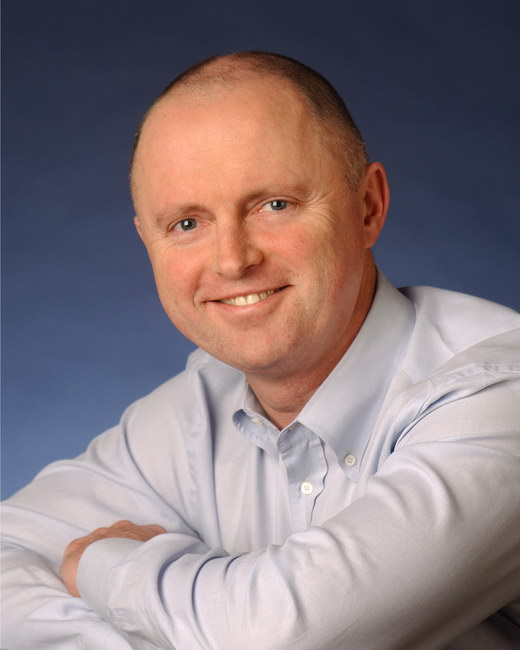
What is the point?
If to quote the speech of Sean verbatim, "the devices of the new category will combine the performance of modern laptops with the functions inherent in tablet computers, offering a high-performance and safe environment for working in a thin, light and elegant case." That is, in fact, we are talking about two devices in one without sacrificing functionality and comfort. Conveniently? Perhaps, yes, because I was already a little annoyed by the need to take on a business trip and a tablet, and a laptop. The first is needed to communicate in numerous social networks, read the news and respond shortly and promptly to letters, but you can not do without the second if you want to write a great post on Habr and process a couple of dozen illustrations for it. Complement something they complement each other, but the weight in the total is obtained tangible.
The new category of Ultrabook will include thin and light devices, the thickness of which does not exceed 2 centimeters, and the price - attention - should be in the range of $ 1000. This is really very cool, because now you can’t buy a really compact and productive model for such an amount, especially if you want something with a touch screen. The first "ultrabooks" promise to launch for sale by the New Year holidays, and the first such device has already been announced - Asus UX21.
It is worth noting that subtlety, lightness and relative cheapness will not appear by the wave of a magic wand. In the "ultrabooks" will be used processors of a new generation, which until then have only the code name Ivy Bridge. This, I recall, the first CPU, made by 22 nm technology using Tri-Gate transistors. Appears in Ultrabook and significantly accelerated graphics core, as well as native support for USB 3.0 and Thunderbolt at the chipset level. In 2013, the Ivy Bridge will be replaced by an even more energy-efficient Haswell family, which will reduce the average thermal pack by half compared to current figures.
Nuclear future
Since 2008, Computex has always said something new about the kids Intel Atom. Did not begin to break tradition and this time. According to Sean, in just three years, Atoms will replace the production technology from the current 45 nm to 14 nm, making stops at 32 and 22 nanometers. This is, in fact, a big leap forward, because since 2008 this family has been produced using the same technology. It is clear that "and so good." But the improvement of the technical process will significantly reduce energy consumption and, importantly, the cost (the more CPU fits on the plate, the cheaper each of them costs).
Well, in the very near future we will meet with the "atoms" of the 32-nanometer family of Cedar Trail, which allows to reduce the size of devices and create netbooks with a passive cooling system. New models will have a number of special features, including Intel Rapid Start (quick exit from standby mode), Intel Smart Connect (installing updates in standby mode), as well as Intel Wireless Display and PC Synch, which will allow you to perform wireless synchronization on various devices. Finally, it is expected that the battery life of devices on the new platform will exceed 10 hours in active mode and will be several weeks in standby mode. Good thing, what can I say. True, it is not entirely clear - on which battery will such indicators be achieved? My heart feels, which is certainly not on a standard three-cell one.
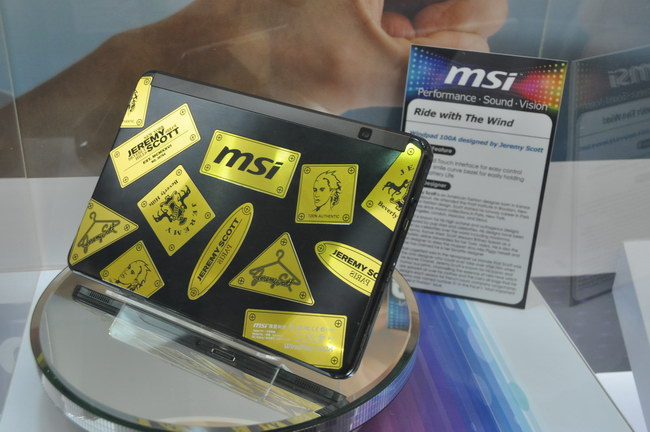
MSI was one of the first to launch an Intel Atom Tablet PC. And at one time the Wind netbook was the very first on this processor
And Shawn spoke about Medfield - the first 32-nanometer “atomic” platform for smartphones and tablets. Honestly, about smartphones, I personally have an assumption that it will only come to serious when moving to 22 nanometers, but for now Medfield will allow you to create tablets no more than 9 millimeters thick and weighing less than 680 grams. Of course, like netbooks, tablets will work with passive cooling. Production Atom Medfield is scheduled to begin before the end of this year, and the appearance of the first devices is expected in the first half of the next.
Meanwhile, the number of tablet PCs on the current, 45-nanometer “atoms” makes a strong impression. You know, the first twenty pieces I threw photographs from different angles. And then suddenly I realized that they are now being made by EVERYTHING. I remember in 2008 I was surprised that netbooks rushed to release even those companies that had not been seen in the manufacture of ready-made systems before. For example, the company has been making a video card for ten years, and suddenly a netbook stands out on the stand. Boring, unsightly, but quite workable. Here and now the same story: the promising direction roused everything, but really complete and convenient devices are obtained from those who had experience in the manufacture of laptops and smartphones. But the rest, however, do not lose heart.
In connection with the tablets, I was surprised by two things.
Firstly, as the MeeGo system has progressed thoroughly. What I saw on the Intel stand really looks quite nice and thoughtful, but it works quickly and without jerks. Compared with what I saw in March in Russia - heaven and earth. Perhaps the fact is that now everything is working on the final version of MeeGo 1.2, and in March only a damp pre-release was available.

Yes, even for MeeGo, a version of the Swype keyboard was made, which raises the convenience of typing on the touchscreen to a new height.
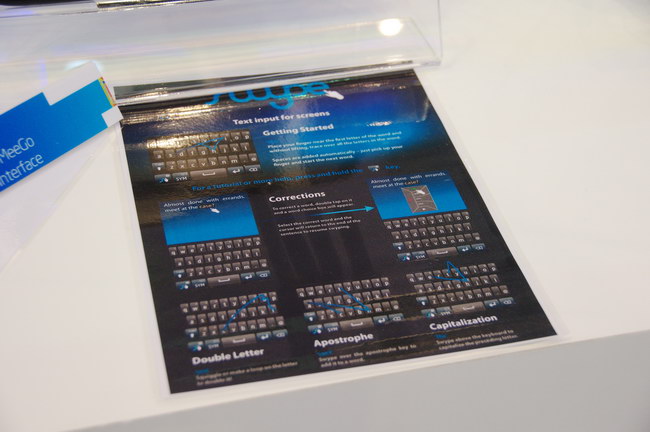
Secondly, it is full of tablets with Atom inside and Android 3.0 on board. Yes, on version 2.2 / 2.3 there is more. But given the uniformity of the hardware platform in most "atomic" tablets, mass migration is not far off.
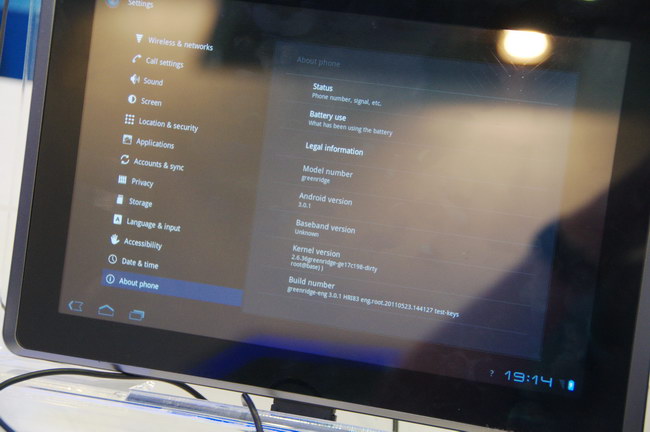
So that you do not suspect me of exaggerating the popularity of Atom's in tablets, here are a few photos. Let me remind you that about the twentieth machine I was just bored with shooting :) And forgive me, please, for the dirty screens: there were a lot of people who wanted to touch it, and the staff of the stands simply did not have time to erase the prints.

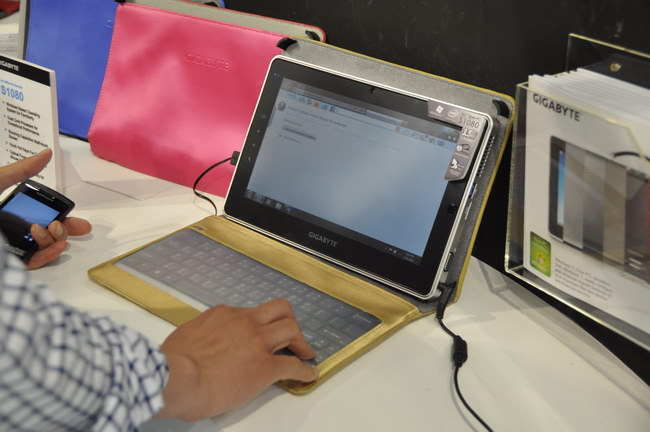

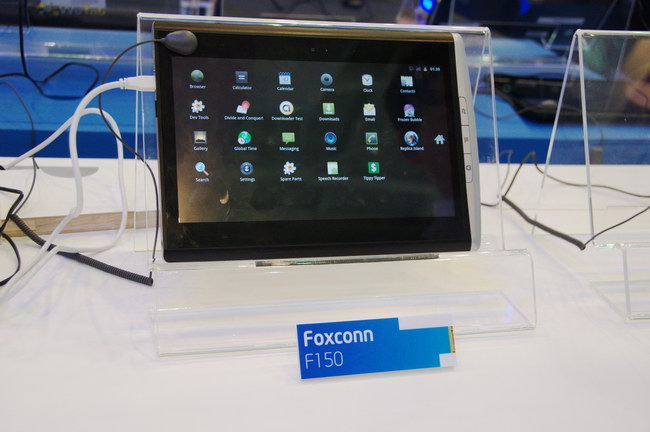
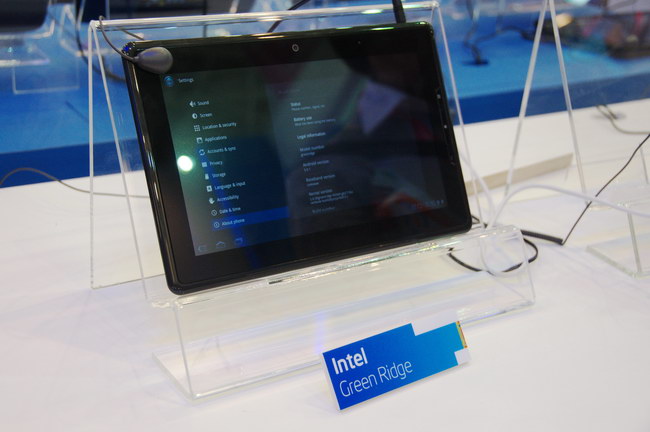
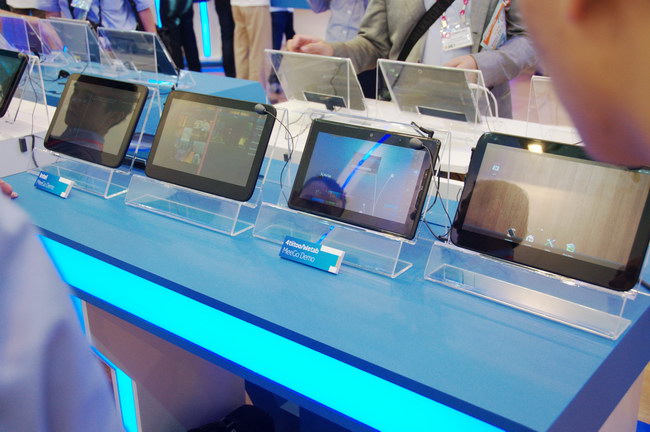
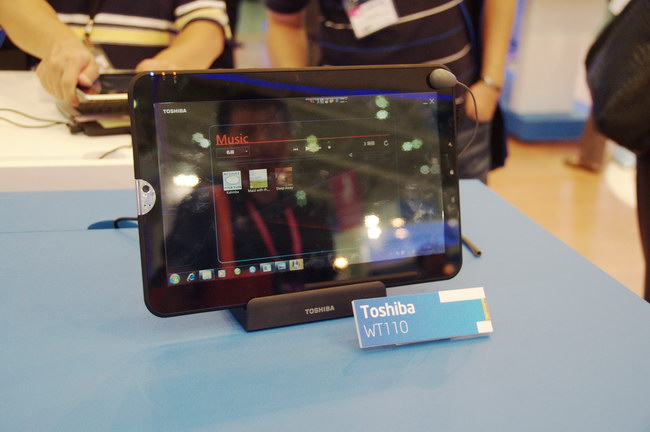



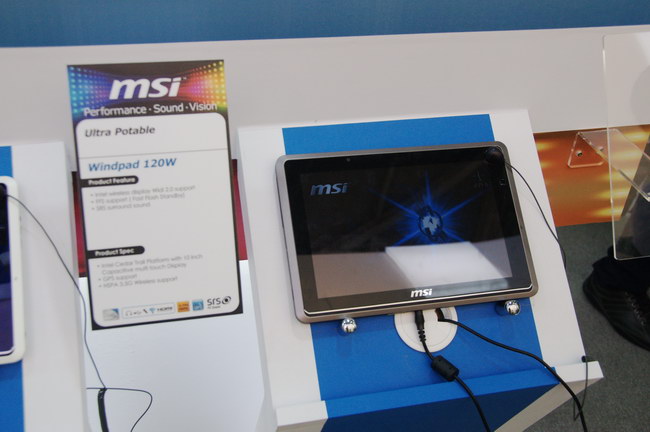
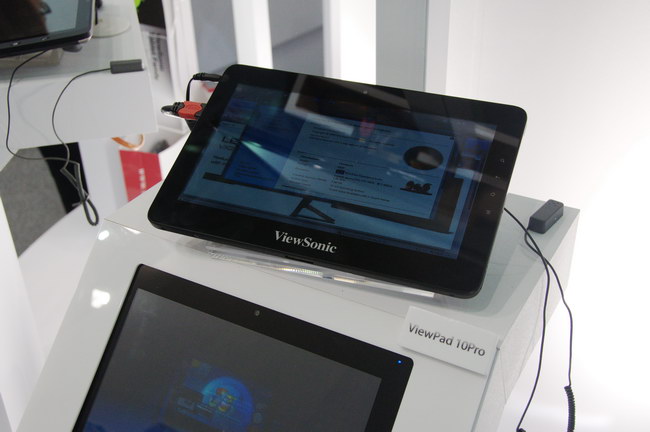
But it is not the tablets that Atom's popularity multiplies. So, at Computex 2011 showed a prototype of an automotive multimedia system running on a bundle of guessing which processor and MeeGo.
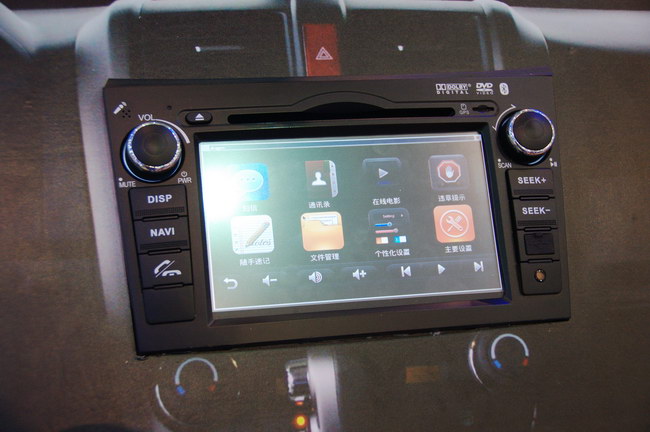
And there were a lot of small scarves for various home media players and set-top boxes. Moreover, if there is a suspicion that the performance of Atom is not enough, the Core 2 Duo can fit in the same form factor, but the power consumption will noticeably increase.


Want to save a lot of space on the table and under it? Buy a computer keyboard on a dual-core Atom and ION platform. Previously, only Asus had this, but now the production has been set up by vigorous Chinese. By the way, I wonder if the Great Wall brand has anything to do with Chinese SUVs?
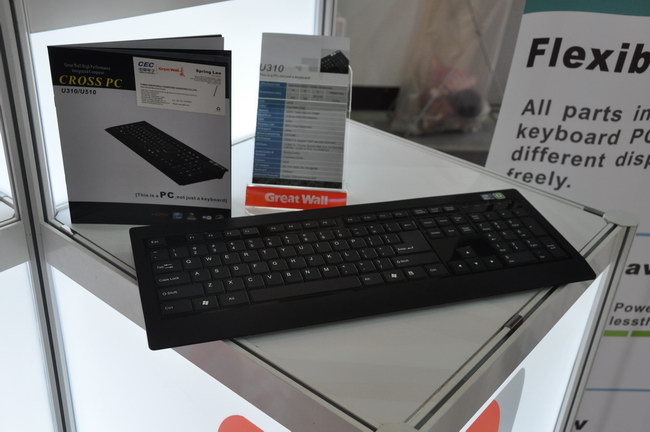
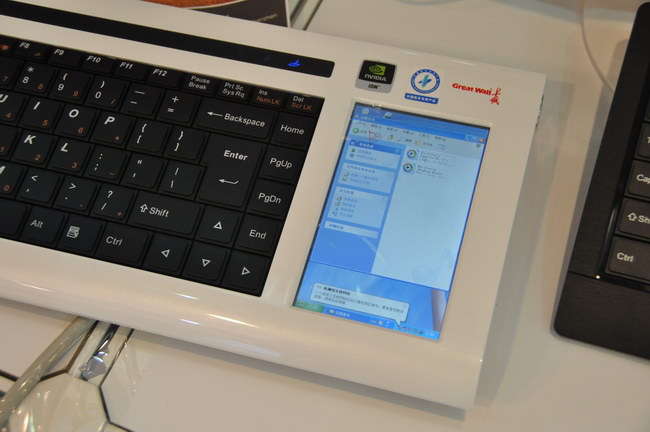
Nowadays, a system of remote diagnostics and counseling for the elderly is being widely implemented in Western countries. Here you are, such a machine on the Atom.

And finally, the photo is a little distracted. Passing by the ECS booth, I noticed very beautiful video cards. Probably, for about fifteen minutes he stood and admired their natural design, rounded outlines, and sturdy materials. Something about them was a pull. I even wanted to take a couple of samples.

Tomorrow I'll go again.

To be on the safe side, I’ll clarify that Computex did not live by chance in Taiwan. It was in this small island nation that dozens of famous IT companies and thousands of lesser-known ones were born. Asus, Acer, MSI, Foxconn, HTC, Gigabyte, Powercolor, XFX, Palit, Sapphire - you can’t enumerate everyone. There were factories in Taiwan for a very long time, but over time they almost all moved to Greater China, and development centers and especially complex manufacturing facilities remained in Taiwan. The value of the state in the industry is so high that iron manufacturers from all over the world, including, by the way, Russia, also flock to Computex (for example, Wexler shows readers and tablet PCs of its own design at the exhibition). Old-timers remember the times when Computex fit in one building, but now its exhibition halls are scattered throughout Taipei, with two located in the recently built huge exhibition center Nangang Exhibition Hall. It is there on the fourth floor and is the stand of Intel.
')
The announcement of new initiatives by Intel was made by senior vice president Sean Maloney. We met two years ago in Petersburg, and, frankly, I was shocked by the lifestyle of this person. Almost all the time, Sean spends on the road - in airplanes, trains and cars. A few nights in one place - and again on the road! So it’s very natural that the Ultrabook story was entrusted to him.

What is the point?
If to quote the speech of Sean verbatim, "the devices of the new category will combine the performance of modern laptops with the functions inherent in tablet computers, offering a high-performance and safe environment for working in a thin, light and elegant case." That is, in fact, we are talking about two devices in one without sacrificing functionality and comfort. Conveniently? Perhaps, yes, because I was already a little annoyed by the need to take on a business trip and a tablet, and a laptop. The first is needed to communicate in numerous social networks, read the news and respond shortly and promptly to letters, but you can not do without the second if you want to write a great post on Habr and process a couple of dozen illustrations for it. Complement something they complement each other, but the weight in the total is obtained tangible.
The new category of Ultrabook will include thin and light devices, the thickness of which does not exceed 2 centimeters, and the price - attention - should be in the range of $ 1000. This is really very cool, because now you can’t buy a really compact and productive model for such an amount, especially if you want something with a touch screen. The first "ultrabooks" promise to launch for sale by the New Year holidays, and the first such device has already been announced - Asus UX21.
It is worth noting that subtlety, lightness and relative cheapness will not appear by the wave of a magic wand. In the "ultrabooks" will be used processors of a new generation, which until then have only the code name Ivy Bridge. This, I recall, the first CPU, made by 22 nm technology using Tri-Gate transistors. Appears in Ultrabook and significantly accelerated graphics core, as well as native support for USB 3.0 and Thunderbolt at the chipset level. In 2013, the Ivy Bridge will be replaced by an even more energy-efficient Haswell family, which will reduce the average thermal pack by half compared to current figures.
Nuclear future
Since 2008, Computex has always said something new about the kids Intel Atom. Did not begin to break tradition and this time. According to Sean, in just three years, Atoms will replace the production technology from the current 45 nm to 14 nm, making stops at 32 and 22 nanometers. This is, in fact, a big leap forward, because since 2008 this family has been produced using the same technology. It is clear that "and so good." But the improvement of the technical process will significantly reduce energy consumption and, importantly, the cost (the more CPU fits on the plate, the cheaper each of them costs).
Well, in the very near future we will meet with the "atoms" of the 32-nanometer family of Cedar Trail, which allows to reduce the size of devices and create netbooks with a passive cooling system. New models will have a number of special features, including Intel Rapid Start (quick exit from standby mode), Intel Smart Connect (installing updates in standby mode), as well as Intel Wireless Display and PC Synch, which will allow you to perform wireless synchronization on various devices. Finally, it is expected that the battery life of devices on the new platform will exceed 10 hours in active mode and will be several weeks in standby mode. Good thing, what can I say. True, it is not entirely clear - on which battery will such indicators be achieved? My heart feels, which is certainly not on a standard three-cell one.

MSI was one of the first to launch an Intel Atom Tablet PC. And at one time the Wind netbook was the very first on this processor
And Shawn spoke about Medfield - the first 32-nanometer “atomic” platform for smartphones and tablets. Honestly, about smartphones, I personally have an assumption that it will only come to serious when moving to 22 nanometers, but for now Medfield will allow you to create tablets no more than 9 millimeters thick and weighing less than 680 grams. Of course, like netbooks, tablets will work with passive cooling. Production Atom Medfield is scheduled to begin before the end of this year, and the appearance of the first devices is expected in the first half of the next.
Meanwhile, the number of tablet PCs on the current, 45-nanometer “atoms” makes a strong impression. You know, the first twenty pieces I threw photographs from different angles. And then suddenly I realized that they are now being made by EVERYTHING. I remember in 2008 I was surprised that netbooks rushed to release even those companies that had not been seen in the manufacture of ready-made systems before. For example, the company has been making a video card for ten years, and suddenly a netbook stands out on the stand. Boring, unsightly, but quite workable. Here and now the same story: the promising direction roused everything, but really complete and convenient devices are obtained from those who had experience in the manufacture of laptops and smartphones. But the rest, however, do not lose heart.
In connection with the tablets, I was surprised by two things.
Firstly, as the MeeGo system has progressed thoroughly. What I saw on the Intel stand really looks quite nice and thoughtful, but it works quickly and without jerks. Compared with what I saw in March in Russia - heaven and earth. Perhaps the fact is that now everything is working on the final version of MeeGo 1.2, and in March only a damp pre-release was available.

Yes, even for MeeGo, a version of the Swype keyboard was made, which raises the convenience of typing on the touchscreen to a new height.

Secondly, it is full of tablets with Atom inside and Android 3.0 on board. Yes, on version 2.2 / 2.3 there is more. But given the uniformity of the hardware platform in most "atomic" tablets, mass migration is not far off.

So that you do not suspect me of exaggerating the popularity of Atom's in tablets, here are a few photos. Let me remind you that about the twentieth machine I was just bored with shooting :) And forgive me, please, for the dirty screens: there were a lot of people who wanted to touch it, and the staff of the stands simply did not have time to erase the prints.












But it is not the tablets that Atom's popularity multiplies. So, at Computex 2011 showed a prototype of an automotive multimedia system running on a bundle of guessing which processor and MeeGo.

And there were a lot of small scarves for various home media players and set-top boxes. Moreover, if there is a suspicion that the performance of Atom is not enough, the Core 2 Duo can fit in the same form factor, but the power consumption will noticeably increase.


Want to save a lot of space on the table and under it? Buy a computer keyboard on a dual-core Atom and ION platform. Previously, only Asus had this, but now the production has been set up by vigorous Chinese. By the way, I wonder if the Great Wall brand has anything to do with Chinese SUVs?


Nowadays, a system of remote diagnostics and counseling for the elderly is being widely implemented in Western countries. Here you are, such a machine on the Atom.

And finally, the photo is a little distracted. Passing by the ECS booth, I noticed very beautiful video cards. Probably, for about fifteen minutes he stood and admired their natural design, rounded outlines, and sturdy materials. Something about them was a pull. I even wanted to take a couple of samples.

Tomorrow I'll go again.
Source: https://habr.com/ru/post/120329/
All Articles